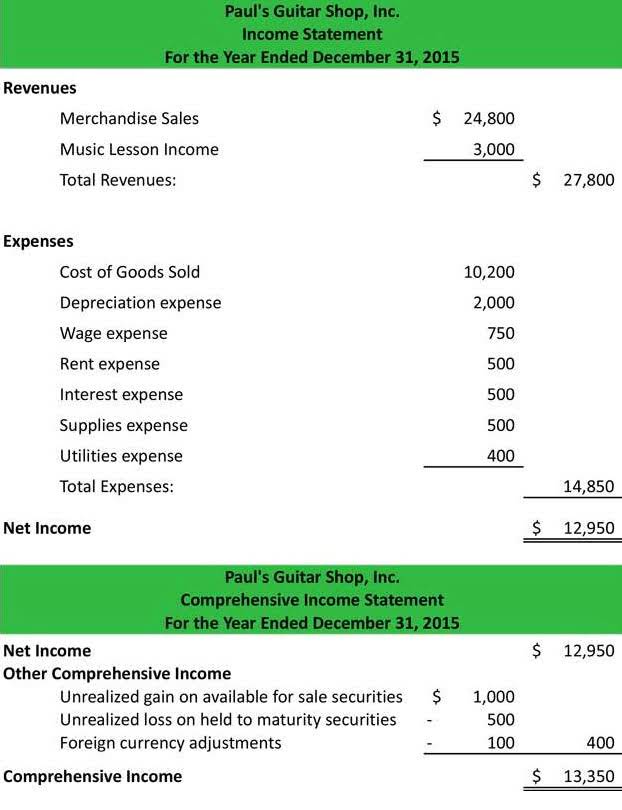Shares Outstanding: Types, How to Find, and Float

The number of shares of stock sold, minus the shares the company buys itself–which are called treasury shares–comprise the shares outstanding. Accountants use the shares outstanding to help calculate the earnings per share on financial statements. Total outstanding shares represent the number of shares of a company’s stock that are currently held by all its shareholders, including institutional investors, company insiders, and the public.

AccountingTools
Companies can also undergo a reverse stock split or share consolidation. Generally speaking, stocks with smaller floats will experience more volatility than those with larger floats. Understanding a company’s financials is crucial to successful investing. Boeing is due to report earnings on Oct. 23, the first time that new Chief Executive Officer Kelly Ortberg presides over the release. Boeing will record $5 billion in combined charges for its two largest businesses when it formally reports the numbers, the company said Friday evening in a surprise announcement. While Boeing finds itself in a protracted crisis, the company still has longer-term prospects.
How Does the Balance Sheet Show the Amount of Stockholders’ Equity?
In this case, the preferred stock dividend must be deducted to get the net income used for the basic EPS calculation. The notes state that the preferred stock dividend is treated as equity, so we have removed this in the adjusted earnings calculation. Activision Blizzard has reported the number of basic shares outstanding on the front page of its form 10-K. On the balance sheet, there is a line item description that states the number of shares outstanding. Here’s how to find out how many shares of a company’s stock are owned by all investors.
- Many companies buy back shares as part of their capital allocation strategy.
- The float is the portion of outstanding shares that’s most relevant for smaller investors.
- The amount of equity to be issued is $3 per share ($2 is the value of the PAR, and $1 is above the PAR).
- Shares that a company buys back from the open market, reducing the total number of outstanding shares.
- The company provides the conversion rate in a footnote or a parenthetical note following the description of preferred stock.
- These statements are available on companies’ investor relations pages or the SEC website.
How to Calculate the Implied Value Per Share of Common Equity
In the above example, if the reporting periods were each half of a year, the resulting weighted average of outstanding shares would be equal to 150,000. Thus, in revisiting the EPS calculation, $200,000 divided by the 150,000 weighted average of outstanding shares would equal $1.33 in earnings per share. Let’s say that Helpful Fool Company has repurchased 500 shares in this year’s buyback program. The company now has 5,000 authorized shares, 2,000 issued, 500 in treasury stock, and 1,500 outstanding. The outstanding stock is equal to the issued stock minus the treasury stock.
- Investors use this information to gauge the company’s financial health and potential for growth.
- It is a crucial indicator for evaluating the market capitalization of the company and the possible influence of changes in the share price on the company’s overall value.
- She has worked in multiple cities covering breaking news, politics, education, and more.
- The articles and research support materials available on this site are educational and are not intended to be investment or tax advice.

For example, if a company made $100 million in annual profits, but only paid out $10 million to shareholders, its retained earnings would be $90 million. This means the shares were outstanding only for the first 6 months of the year. As a result, they have been assigned 50% weightage (6/12) when calculating the WASO. The balance sheet is one of the key documents that investors use to https://www.bookstime.com/ evaluate a company, so it’s important to become familiar with it. By issuing securities or reducing ownership stakes, the money was obtained. On the other hand, the transaction’s credit impact is reflected in the equity balance.

Our goal is to deliver the most understandable and comprehensive explanations of financial topics using simple writing complemented by helpful graphics and animation videos. At Finance Strategists, we partner with financial experts to ensure the accuracy of our financial content. Finance Strategists has an advertising relationship with some of the companies included on this website. We may earn a commission when you click on a link or make a purchase through the links on our site. All of our content is based on objective analysis, and how to calculate shares outstanding from balance sheet the opinions are our own. We Fools may not all hold the same opinions, but we all believe that considering a diverse range of insights makes us better investors.
How confident are you in your long term financial plan?

A company’s balance sheet provides excellent insight into its overall health. And it also enables you to understand some of the moves a company makes if the basic values drastically change from one reporting period https://www.instagram.com/bookstime_inc to another. One way you can determine these moves is by watching out for the number of shares outstanding. The number of shares outstanding increases when a company issues additional shares or when employees exercise stock options. Conversely, they decrease if the company buys back some of its issued shares through a share repurchase program. Instead, the weighted average incorporates changes in the number of outstanding shares over a certain period of time.

We have been asked to show how the following transactions will impact the company’s balance sheet and calculate the number of shares outstanding. For example, let’s say you want to calculate the weighted average number of outstanding shares for a company over two reporting periods of 6 months each. In the first 6-month reporting period, the company has 100,000 shares outstanding. In the second 6-month period, the company’s number of shares outstanding is 150,000. Companies that have publicly traded stocks in the United States are required to file public financial disclosures to the Securities and Exchange Commission (SEC) which include the company’s balance sheet. You can also find the company’s balance sheet in its annual report, which can often be found on the company’s website.
